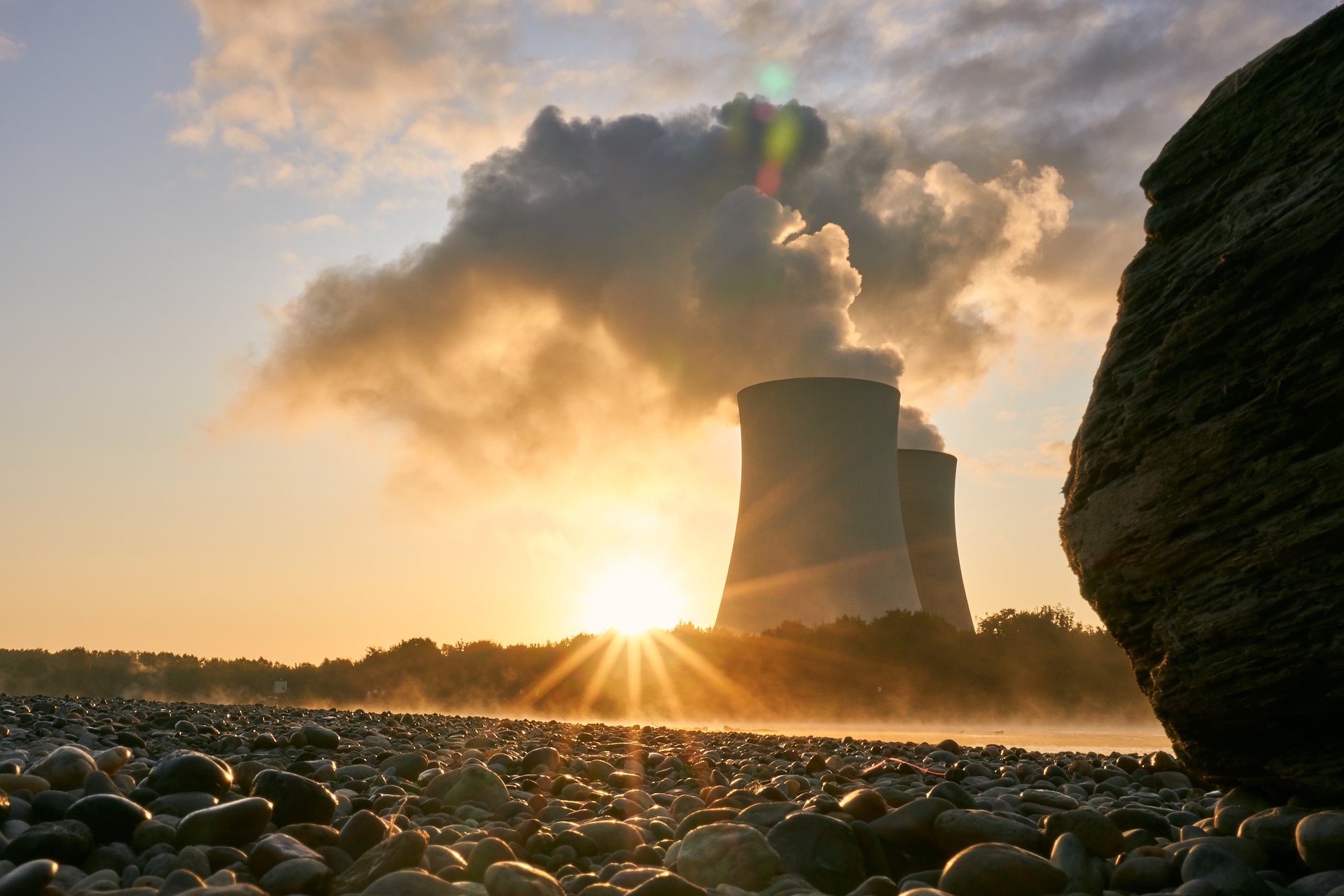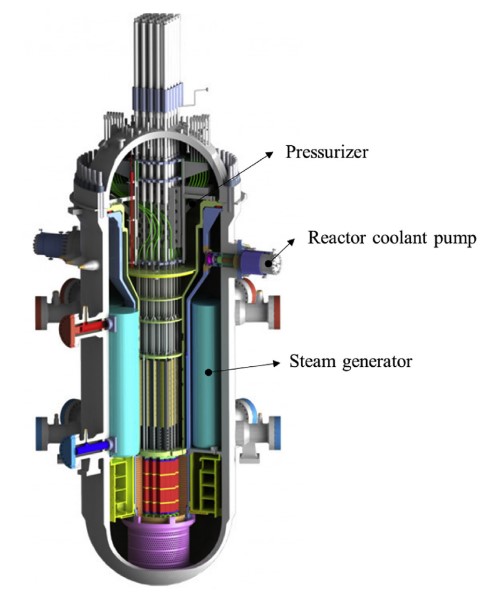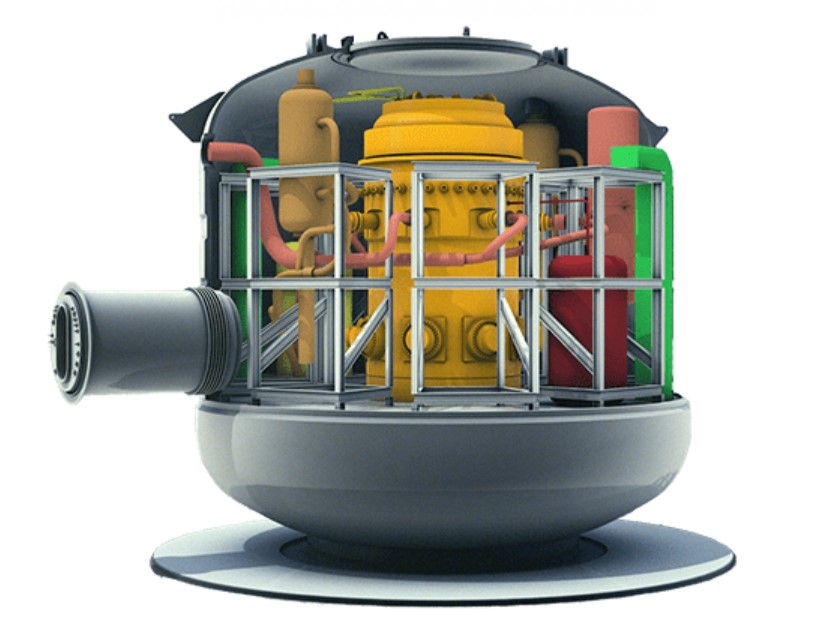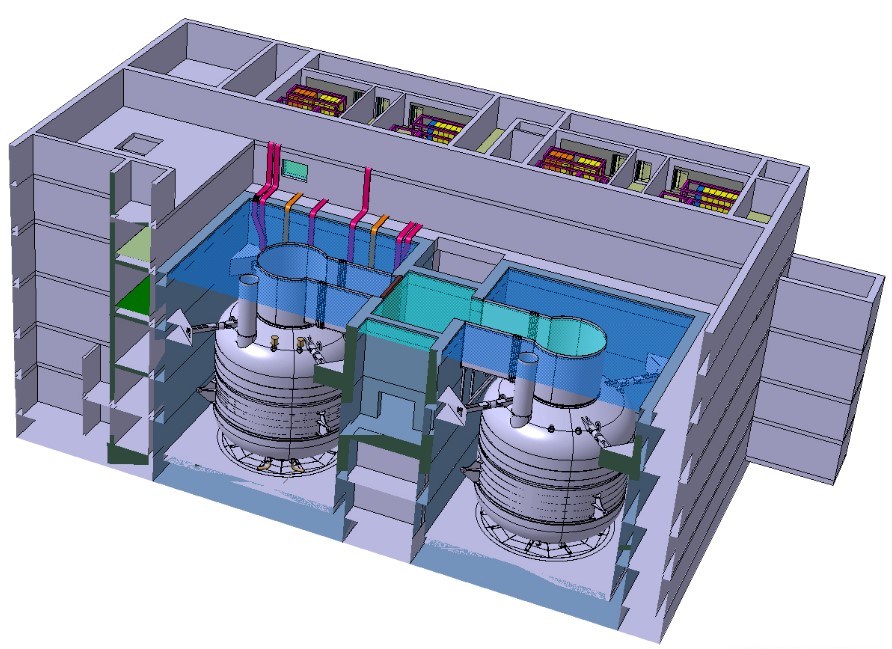The future of nuclear energy

Advances in nuclear power bring us ahead of the reactors of the future, SMR.
Published on February 13, 2023 by Francisco García
Energy Nuclear Innovation Electricity
4 min READ
Introduction.
We keep talking about the ecological transition, clean energy and the environmental problem.
All the focus is on renewable energies, solar photovoltaic technology is advancing by leaps and bounds, offshore wind energy is giving great results, but most renewable energies share a fundamental problem: dependence on external factors such as the sun or the wind.
This factor is decisive since an entire solar photovoltaic power plant can be producing at its peak and drop to zero in a matter of seconds because of the clouds, in the case of wind it is the same because it can stop blowing very quickly. Obviously this is known and there are different solutions, the simplest may be to place batteries so that production does not drop suddenly, although there are others such as thermal storage, flywheels, flywheels, etc.
This generates very large cost overruns but above all leaves these generation sources dependent on other alternative sources to make up for this deficiency.
This is where nuclear energy comes into play, a robust and reliable source of energy. While it is true that combined cycle plants are a safe bet for these shortcomings as they are efficient and can be stopped and started up relatively quickly, they emit a lot of CO2 into the atmosphere so in the future we will try to replace them.
Nuclear Energy.
Nuclear energy is obtained from nuclear fission, i.e., the nucleus of a heavy atom, upon capturing an incident neutron, splits into two or more nuclei of lighter atoms, emitting neutrons, gamma rays and large amounts of energy in the process.
Nuclear power plants use this principle to produce energy, generate steam and thus generate electricity thanks to an alternator.

Schematic representation of nuclear plant
These plants are usually located far from large urban centers, near rivers or the sea. However, this could change thanks to SMRs (Small Modular Reactors).
SMR (Small Modular Reactor)
SMRs are essentially small nuclear reactors. This type of advanced reactor is being developed for integration closer to urban centers, with a capacity of up to 300 MW and improved safety and efficiency performance.

Schematic representation of SMR
They have a number of advantages:
They are small and can be installed underground which improves safety and significantly reduces visual impact.
They are modular which facilitates their installation and maintenance.
They can be installed closer to cities, which favors the advancement of smart cities, reduces transport losses and therefore improves the efficiency of the electricity system.
They use advanced nuclear technology, i.e. they reuse waste, are more efficient and safer, equipped with the latest technology and automatic activators in case of any incident.
With this video you can get an idea of how it works:
These reactors can be fundamental for sustainable energy development and investing in nuclear technology is very important to improve their performance. Nuclear waste can be used more and more, in addition to the fact that this technology does not emit greenhouse gases and energy production is highly efficient.
Because they are so small, they can be installed in areas that would be difficult to access for a conventional power plant and their durability is considerably longer, they can operate without the need for a power plant, and they can be installed in areas that are difficult to access for a conventional power plant.
Current situation
Several countries have already put the batteries to develop this project and it is expected that they will be operational by 2030, although it may still be too early to tell.
The President of France Emmanuel Macron showed his support for investment in nuclear energy as a means to meet environmental objectives and specifically in the SMR in the ‘France 2030’ plan where he also refers to the green transition in the automotive sectors or aeronautics.


Nuward Project, France. Source: TechnicAtome
The United States also has research and development projects for these reactors, forming part of its energy improvement plan.
On the other hand, China, the new great competitor in the nuclear sector, has ambitious projects in this sector and especially with SMR where it has even launched one in 2021.
Conclusion
Going back to the beginning, if nuclear energy is a fantastic ally to solve the problems of renewable energies, SMRs can become a reference product with great potential to develop independent and self-sufficient energy communities.
References
[1] A. Barbaux, «L’Usine Nouvelle,» 11 10 2021. [En línea]. Available: https://www.usinenouvelle.com/article/les-smr-nouvelle-priorite-nucleaire-francaise.N1148987.
[2] NUSCALE, «NUSCALE,» 2023. [En línea]. Available: https://www.nuscalepower.com/en/products/voygr-smr-plants.
[3] I. González, «El Español,» 04 08 2022. [En línea]. Available: https://www.elespanol.com/omicrono/tecnologia/20220804/central-nuclear-ciudad-formula-barata-eeuu-dependencia/533697037_0.html.
[4] J. Liou, «IAEA,» 03 12 21. [En línea]. Available: https://www.iaea.org/es/newscenter/news/que-son-los-reactores-modulares-pequenos-smr.
[5] TechnicAtome, «TechnicAtome,» 2023. [En línea]. Available: https://www.technicatome.com/activites/reacteurs-et-installations-nucleaires/smr/.
[6] K.-H. L. J.-S. L. C. W. J. Y. Kwanghyun Ahna, «Analytic springback prediction in cylindrical tube bending for helicaltube steam generator,» ELSEVIER, 2020.
[7] «DelegFrance,» 04 01 2022. [En línea]. Available: https://onu-vienne.delegfrance.org/Le-nucleaire-et-les-SMR-au-coeur-du-plan-d-investissement-France-2030.
[8] A. Jeuffin, «France Bleu,» 11 02 2022. [En línea]. Available: https://www.francebleu.fr/infos/economie-social/nucleaire-emmanuel-macron-veut-lancer-des-smr-d-ici-2030-qu-est-ce-que-c-est-1644559191.